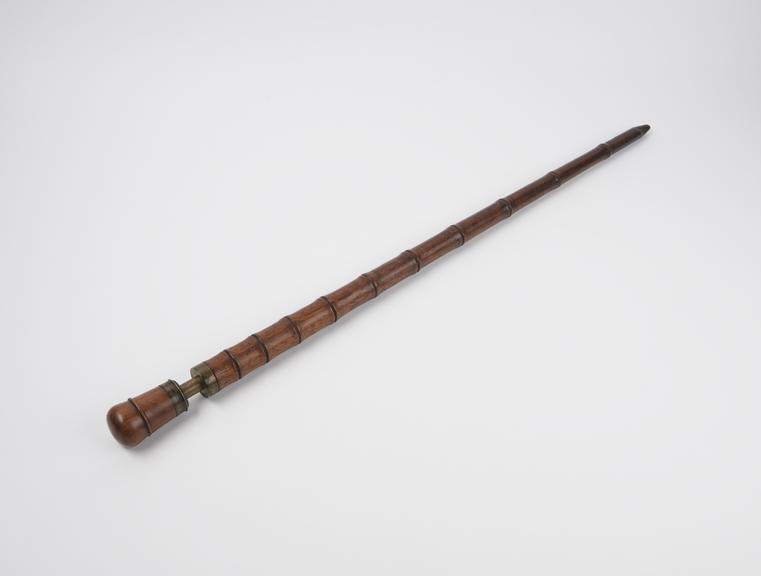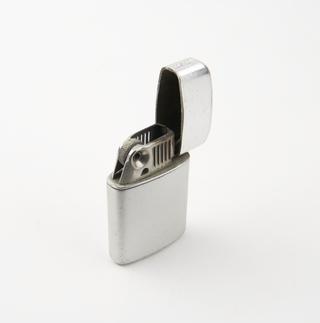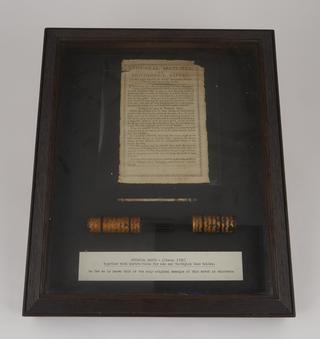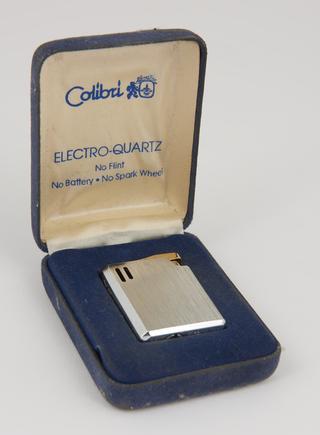
Fire-piston contained in a walking stick
- Made:
- Bow

Fire-piston (or "fire-syringe") contained in a walking-stick of dark-red mahogany or rosewood, turned to represent a cane; length 2 ft. 5 1/2 in (but reduced from about 2 ft 10 ins by burning, through use by a former owner as a fire-poker); diam of knob 1 1/2 in, tapering (formerly) to about 1/2 in at lower end; knob unscrews, disclosing a compartment for holding a store of tinder (amadou), with a winged thumb-screw of brass for holding the tinder in position; the uppermost 2 1/2 ins forming the handle, is provided with a projecting tube or cylinder of brass (length 3 ins, diam 1/2 in) whch draws out of the centre of the cane; this tube covers a projection having a perforated screw-on cap intended, apparently, to hold a small fragment of amadou; the walking-stick represents Lorentz's English patent no. 3008 of 1807, but with variations (doubtless improvements suggested by experience); it is operated by inserting a small piece of amadou beneath the screw-on cap, drawing out the tube to almost its full length, then driving it in again sharply by a sudden blow of the point on the ground, and instantly withdrawing it completely, when the tinder is found to be aglow; this stick belonged formerly to Mr. John Walter (1775-1848), a prominent townsman of Bromley, Kent, and afterwards to his son, Mr. James Birch Walter (1805-1891), also a prominent townsman of Bromley, who could remember seeing his father use it to light his "Churchwarden" pipe; given by the latter to Mr. William Baxter, also of Bromley, from whom it was acquired in 1927; specimen probably unique. England.
Details
- Category:
- Firemaking
- Object Number:
- 1937-682/1232
- Materials:
- mahogany (wood), brass (copper, zinc alloy) and rosewood
- type:
- fire-piston
- credit:
- Wilkinson Sword Ltd.



